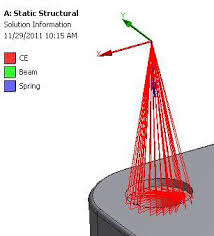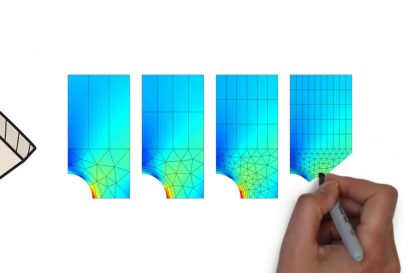You use a Remote Point as a scoping mechanism for remote boundary conditions. Remote points are a way of abstracting a connection to a solid model, be it a vertex, edge, face, body, or node, to a point in space (specified by Location). The solver uses multipoint constraint (MPC) equations to make these connections.
With remote points, you can easily apply a boundary condition from outside of your design. For instance, one of the basic examples of the engineering problems, a torsion condition applied to a cantilever beam can be designed with remote points.

If you would like to design this FE model in Ansys, you do not need to build all the model in order to apply the torsion force which is connected by a lever on the edge-top of the beam. Remote points allow you applying boundary conditions by defining points in the selected coordinate systems. Particularly, this feature help users to create submodels without dealing with big-scale result files.
Remote Points are akin to the various remote loads available in the Mechanical application. Remote boundary conditions create remote points in space behind the scenes, or, internally, whereas the Remote Point objects define a specific point in space only. As a result, the external Remote Point can be associated to a portion of geometry that can have multiple boundary conditions scoped to it. This single remote association avoids overconstraint conditions that can occur when multiple remote loads are scoped to the same geometry. The overconstraint occurs because multiple underlying contact elements are used for the individual remote loads when applied as usual to the geometry. When the multiple remote loads are applied to a single remote point, scoped to the geometry, the possibility of overconstraint is greatly reduced.
Remote Points are a powerful tool for working with and controlling the Degrees of Freedom (DOF) of a body. Remote Points provide a property, DOF Selection, which gives you a finer control over the active DOF’s used to connect the Remote Point location to the body.
Furthermore, Remote Points can be used independently, without being scoped to a boundary condition. Remote Point creates MPC equations and therefore can be used to model phenomena, such as coupling a set of nodes so that they have the same DOF solution.


Another capability of Remote Points is that they are also a scoping mechanism for the Constraint Equation object. The equation relates to the degrees of freedom (DOF) of one or more remote points
A Remote Point or multiple remote points work in tandem with the boundary conditions listed below.
- Point Mass
- Thermal Point Mass
- Joints
- Spring
- Bearing
- Beam Connection
- Remote Displacement
- Remote Force
- Moment








